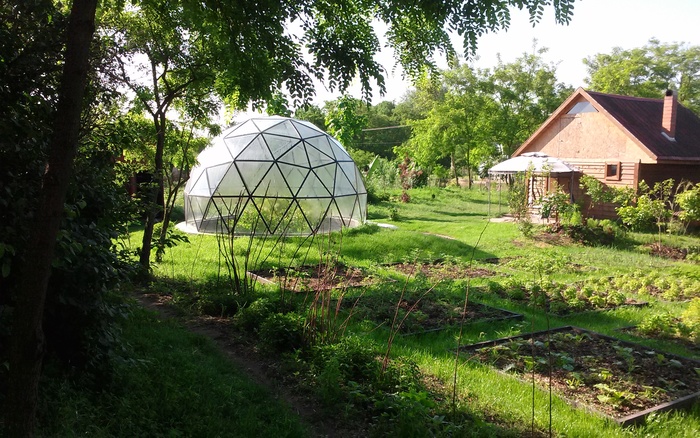The Sustainable Homes of the Future – Geodesic Domes
The company Biodomes www.biodomes.eu builds one-of-a-kind glass and metal geodesic domes that can withstand earthquakes up to 8.5 on the Richter scale and winds up to 320 km/h due to the aerodynamic shape.
The earth sheltered green roof geodesic dome homes that they build are incredibly well insulated, are flooded with natural light and represent the ultimate sustainable home of the future.
Aside from their natural beauty, geodesic domes also have many structural advantages. Geodesic shelters have been built around the world in varied climates and have proven to be the strongest and most efficient human shelter ever conceived.
Their goal is to create structures whose function is as important as their form, buildings that are beautiful and functional at the same time.
Biodomes offer over 20 different dome models that can be sized and customized in a number of ways and the domes offer unsurpassed versatility, they can be used as an ultra-modern eco-home, a greenhouse, as a recreational space, indoor pool or even a stellar observatory – the possibilities are endless.
Geodesic domes are extremely strong for their weight due to their omni triangulated surface that provides an inherently stable structure, with a natural resistance to external factors like earthquakes up to 8.5 on the Richter scale, winds up to 320 km/h due to the aerodynamic shape and loads up to 20 tones per point of structure.
Geodesic domes utilize the power of natural geometry to make incredibly efficient structures. Geodesic domes are three-dimensional structures using stable triangles approximating spheres to create multiple load carrying paths from point of load to point of support. Triangles are the strongest shape because they have fixed angles and don’t distort very easily. The triangle is the only arrangement of structural members that is stable within itself without requiring additional connections at the intersection points to prevent warping of the geometry. In other words, apply pressure to one edge of a triangle, and that force is evenly distributed to the other two sides, which then transmit pressure to adjacent triangles. That cascading distribution of pressure is how geodesic domes efficiently distribute stress along the entire structure.
The spherical design results in highly efficient and effective air circulation in both summer and winter. Less surface area makes these buildings less susceptible to temperature changes, and thus, inexpensive to heat and cool as compared to rectangular homes. The aerodynamic exterior means that cold and warm air flows around the structure instead of forcing its way into the interior. They mirror the suns path thus maximizing solar gain all day, all year and they also distribute perfectly heat and sounds.
There are two reasons domes are energy efficient. The ambient airflow inside the dome is continuous, with no stagnant corners, requiring less energy to circulate air and maintain even temperatures. The energy required to heat and cool a dome is approximately 30% less than a conventional building. The second is the high volume-to-surface-area ratio, requiring less building materials to enclose more space. The lower the ratio of a building’s outside perimeter to its enclosed living area, the less energy is required for building, heating and cooling. The sphere has 25% less surface area per volume enclosed than any other shape. The dome combines the inherent stability of triangles with the advantageous volume-to-surface-area ratio of a sphere. The larger the dome, the more efficient it becomes. This is demonstrated by doubling the diameter, which encloses eight times the volume.
Given the inverted circular design of the dome shaped structures, the dissipation of energy is also carried out in a highly efficient manner. This means that the various sections of such a structure can be rapidly heated and cooled in an even manner.
Domes offer the best structural integrity when compared to other styles of construction. This is perhaps why they have been in use since the ancient times, when building stronger and long lasting structures was a priority. The above features of the domes have become widely accepted in the modern construction industry and have revived the trend of such structures.
We are based in Carei, Romania, and can build anywhere in the European Union or even outside the EU depending on the project.
You can contact us at office@biodomes.eu
